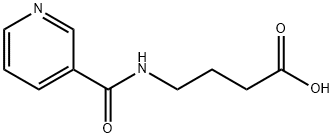Picamilon: an analogue of the neurotransmitter γ-aminobutyric acid (GABA)
Picamilon is a derivative of γ-aminobutyric acid (GABA) and nicotinic acid developed in 1970 by the All-Union Vitamin Research Institute to increase central nervous system (CNS) levels of γ-aminobutyric acid (GABA). Drugs that can mimic or increase GABA activity in the brain have the potential to provide anti-anxiety and anti-convulsive effects. GABA itself, when consumed orally, does not cross the blood-brain barrier. Much research has, therefore, been devoted to developing orally active agents that have GABA-like effects. Both gabapentin (a GABA analogue) and picamilon were designed to be orally administered drugs that cross the blood-brain barrier and provide inhibitory CNS effects. Picamilon, prescribed in dosages from 50 mg to 200 mg, can cross the blood-brain barrier in animal models and, once in the CNS, is hydrolyzed into GABA and nicotinic acid. The released GABA could potentially have inhibitory properties, including anti-anxiety and anti-convulsant effects. Nicotinic acid would also be released, potentially leading to dilation of CNS blood vessels. The FDA has never approved picamilon for use in the USA, but picamilon is used in Russia to treat various neurological conditions[1].



